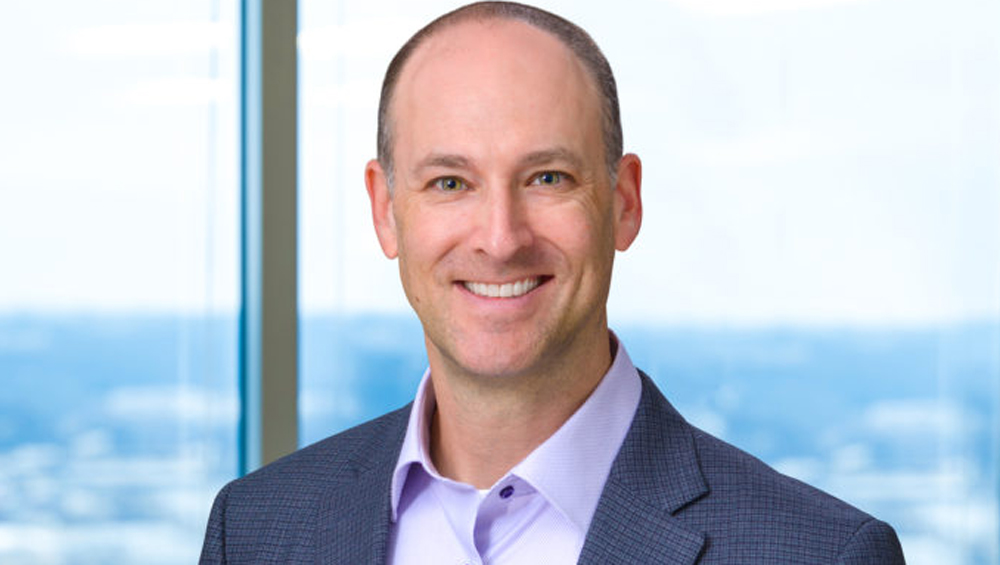
For Scripps’ Symson, Journalism And Perpetuation Are Twin Pillars

 It seems impossible that The E.W. Scripps Co., the recipient of TVNewsCheck’s Station Group of the Year for 2022, could be led by anyone but a journalist.
It seems impossible that The E.W. Scripps Co., the recipient of TVNewsCheck’s Station Group of the Year for 2022, could be led by anyone but a journalist.
Talk to anybody at Scripps from its corporate ranks to its stations and the weight of journalism’s religiosity invariably spills forth. Its practice commands veneration at every level, in every action. And you wouldn’t make a pope out of someone who was never a priest.
Adam Symson, Scripps’ president and CEO, is, as one holding these ranks at this company must be, a true believer, “a person of mission” in his own description. The Los Angeles native began his career as an investigative journalist at stations including WBBM in Chicago and KCBS, KNBC and KCAL in Los Angeles and as an independent producer at NBC News and CBS News.
His flak jacket still hangs in his office, a reminder of those days. Not that he needs one.
“I got into journalism and particularly investigative journalism because I felt a strong social justice calling that it is our responsibility to identify wrongdoing and shine a light on it and then for people to take action,” Symson says.
For Symson, leading a broadcasting company means drawing on journalism’s skills every day. Those include challenging assumptions, finding paths that scarcely wind in straight lines and being driven by an inexhaustible well of curiosity.
“I don’t always assume things are as they appear,” he says. “And I am not easily dissuaded from the path I am seeking.”
Most of all, Symson says, journalism is about communication, and that has been the most important facet he has drawn on in his tenure running Scripps.
“Journalism is about storytelling, and it turns out that is what is necessary to be a decent leader of a media company these days,” he says. “I spend so much time communicating and storytelling the vision for this company to multiple stakeholders — to employees, to shareholders, to Scripps family members.”
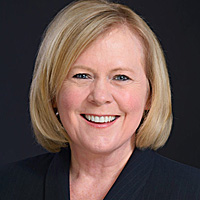
Lisa Knutson
Lisa Knutson, president of Scripps Networks and a 17-year veteran of the company, affirms that storytelling is one of Symson’s most fundamental strengths. “He is someone who is able to articulate a plan,” she says. “He believes in it. He is an excellent communicator. He gets people excited, enrolls them in the vision and then hires people and leaves them alone to do their jobs.”
Testing His Mettle
Of course, there are lots of other characteristics a good CEO needs to survive in the cutthroat world of publicly traded companies. Symson learned that soon enough after taking Scripps’ helm in 2017. Having risen through the company’s ranks to its chief digital officer, his bullishness on digital platforms was met with an almost immediate challenge by activist shareholder Mario Gabelli, who argued that the company needed to improve its broadcast cash flow and mounted an unsuccessful proxy battle in 2018.
Symson says he’d been warned by his predecessor Rich Boehne (also a former journalist) that leading such a company requires “a level of resilience that allows you to take a kick in the stomach and still get up.” The proxy fight was one such kick, he says, and there have been others, including some high-profile acquisitions that he wasn’t able to pull off and the general experience of leading through the pandemic, which took its toll on many a person in a C-suite.
He likens resilience-building in the job to working up to curling a 25-pound weight. When at first it’s inconceivable, you start with 10 pounds, then build up to 15 until 25 starts looking less impossible.
“I feel to some extent that all of the challenges that we faced over the near term have helped me as a leader set myself up to be able to recognize how to guide the company for the longer term,” Symson says. “It is very clear that the business is going to be difficult, and you are going to have to identify a north star and really focus on it and continue to move in that direction.”
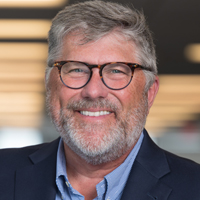
Kerry Oslund
Kerry Oslund, VP of strategy and business development at Scripps, has known Symson for 30 years, first working together at KCAL, when Oslund was an executive producer and Symson worked on the assignment desk. He has seen Symson’s tenacity coalesce over the decades.
“This is a guy that is incredibly curious and then incredibly tenacious,” Oslund says. “When he finds a path that he believes in, he will work that path as hard as any human I have ever known. I’ve watched him stay curious, consume the data to either support or reject whatever ideas he has, and then when he affirms some of his thoughts or intuitions, he moves forward aggressively. He has a higher tolerance for risk than any of the CEOs I have had the privilege to work with.”
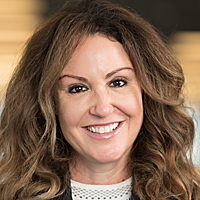
Candace Anderson
Candace Anderson, Scripps’ VP of people and culture who has been at the company for 22 years and has worked with Symson since his executive producing days, agrees. “You have someone who is not afraid to take educated risks, somebody who is a visionary and can quickly put together all the pieces and at the same point in time can authentically connect with folks as well,” she says.
Whatever action and its risk factor Symson weighs, however, Oslund says it’s ultimately guided by his baseline integrity. “When it comes right down to it, he is the kind of guy who will say, ‘What is the right thing to do?,’ which frames up everybody because deep down we all know what the right thing to do is. And that is usually where we end up.”
National Strategy
Scripps has undergone a series of transformational changes between Symson’s tenure as chief digital officer through the present, getting out of the newspaper business from which it got its start 144 years ago, into and out of the radio business and into and out of podcasting as well.
And while Symson has hardly forsaken digital since his chastening proxy battle, leading the company as an early entrant into streaming among other steps, his most unpredictable move has been doubling down on over-the-air and building a portfolio of nine national networks to complement the company’s TV stations in 41 markets.
He says the national networks front, where again Scripps was an early mover, tracks completely with his overarching goals for the company, which fundamentally require scale.
“In a highly competitive environment, especially one that is fairly regulated and consolidating, you are going to need to have a level of scale in order to be both economically viable and relevant,” Symson says. “Your economics are benefitted by scale, and for us as a mission-oriented company, I feel very strongly that we need to have the margin for the mission.”
Symson’s latest scale maneuver is the creation of a national news division called Scripps News, which will launch on Jan. 1. It will fold Newsy (the company’s current national news network, to be rebranded as Scripps News), Scripps’ Washington bureau and its Denver-based Local Media national news desk into a single division that also draws on contributions from its local stations.
A Focus On Perpetuation
Scripps’ evolving national OTA strategy hinges on what Symson calls “plus fatigue,” consumers’ growing exhaustion with the a la carte world of streaming and its SVOD upsells. His bet is to parlay that fatigue into a consumer rediscovery of the myriad free OTA options just a digital antenna away, and he’s put $20 million of the company’s money into a public awareness project, The Free TV Project, to lead them there.
 All of it is aimed toward the company’s larger goal of what Charles Scripps, the company’s board chair from 1953 to 1994, used to call “perpetuating the concern,” Symson says.
All of it is aimed toward the company’s larger goal of what Charles Scripps, the company’s board chair from 1953 to 1994, used to call “perpetuating the concern,” Symson says.
“When we sit down every year to work on our strategic plan, the premise by which we gather is the company’s intent to perpetuate and create value for shareholders, employees and the communities we serve through the journalism and media landscape,” he says.
Symson intends to see Scripps go on for another 140 years, he says, and it’s essential to draw on his team’s strengths to chart the way there.
“You have to give your leaders and your teams the room to be entrepreneurial and create and to innovate because they are the ones that are going to come up with those opportunities that show you where the next path is,” he says.
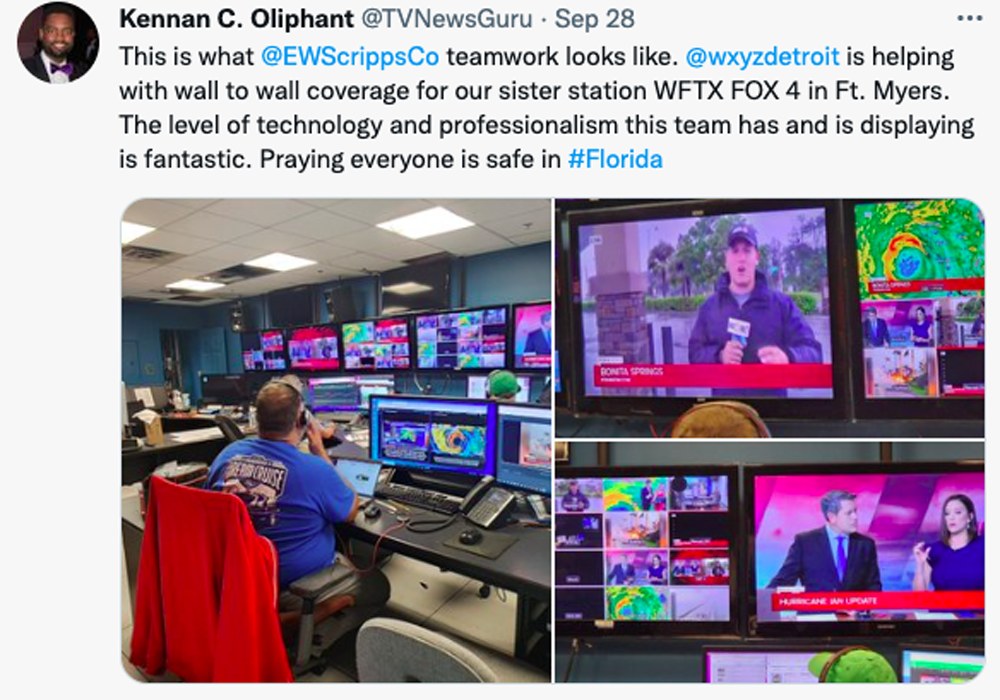
A tweet from Kennan C. Oliphant at WXYZ Detroit during Scripps coverage of Hurricane Ian last month.
For Symson, working toward perpetuation happens on multiple fronts. Foundationally, there is the journalism product itself, which he sees as a hedge against widening news deserts and an ever-more fragile democracy. He views each one of Scripps’ local newsrooms and its new national news division as critical instruments in fostering an informed electorate.
Perpetuation also means an embrace of equity, diversity and inclusion in both the news product and the workplace environment, and Scripps has been an industry leader on both fronts.
“We have got to recognize that in order to produce a product that is going to resonate with the largest audience possible, we have to represent the diversity of that audience,” he says.
Symson believes perpetuation also hinges on not being handcuffed to any one medium or platform, but to follow where the consumer leads and iterate products accordingly.
“The history books are full of company brands and names where they weren’t able to make the turn because they weren’t comfortable with change,” he says. “We are not necessarily tied to one way of creating value.”
And finally, Symson maintains perpetuation is rooted in creating a sustainable work environment in an industry that is fast losing existing talent to burnout and emerging talent to other, more appealing fields.
Part of that ties back to Scripps’ EDI efforts and making sure there are clear pathways for advancement in the company for people of all backgrounds. To that, Symson believes Scripps has one of the best employment brands in the country that attracts people of mission who want to do good work.
The other part involves being flexible with a workforce that has been fundamentally changed by the pandemic. Reexamining benefits and compensation, particularly mental health care for hyper-stressed newsroom employees, have emerged as prerogatives, Symson says.
So has hybridity with remote work, where Scripps is again taking the lead with virtualizing or hybridizing many positions across its ranks.
“The world has changed,” Symson says. “We need to innovate with the labor market.”
A Journalistic Legacy
Symson holds his imperatives at Scripps in very clear terms: “My job is to steward it, to care for it like a parent and to hope that for the time that I am privileged enough to be able to lead it and our employees that I perpetuate the concern, set it up for continued success and pass it on to the next CEO to do the same,” he says.
He never saw himself as taking on the CEO’s mantle, and he had always envisioned a career as an investigative reporter and producer. But like the company itself, Symson has scaled up to meet the moment.
“It has allowed me the opportunity to scale those desires, to support other journalists and other folks in the entertainment business,” he says. “I just hope to be able to perpetuate that so that the next people who depend on journalism in this country have a quality, objective product.”
This is the second installment of a three-part series. Part one appeared yesterday here and part three will appear on Wednesday.


































Comments (0)